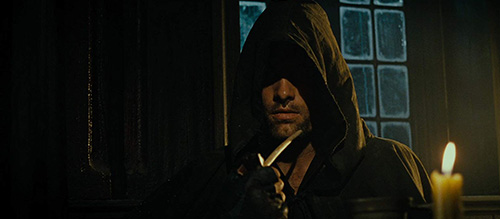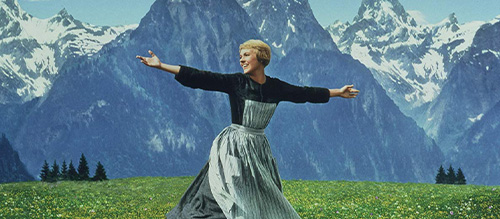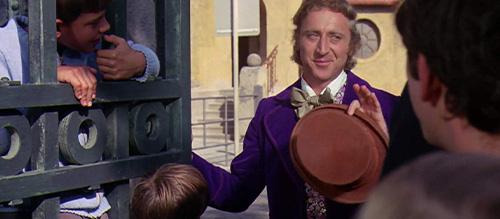Katie Doyle’s 5 More of the Best Character Introductions in Movie History
3. Aragorn
The Lord of the Rings: The Fellowship of the Ring (2001)
The Lord of the Rings trilogy is probably more famous (infamous) for its multiple endings – a criticism that vexes many diehard fans. The Fellowship of the Ring in particular boasts a plot full of mystery and intrigue, full of red herrings to flabbergast and shock audiences. With J. R. R. Tolkien’s work in the hands of Peter Jackson, the audience are mere putty and, just like the hobbits, we cannot distinguish between friend and foe.
After an introduction to the idyllic paradise that is The Shire which is followed by a terrifying chase by murderous Black Riders, our hearts haven’t stopped hammering, even when the the hobbits reach the supposed safety of Bree. With the ill-fated ring-bearer, Frodo barely having time to catch his breath, the screen is yet again flooded with dread as he realises he is being stared at by a particularly shady looking character. Sat in the corner by himself with his hood pulled up (despite his close proximity to the fire) not much can be seen of his face, except the occasional flash of his eyes, illuminated by the gloom of his pipe. None of Frodo’s fears are quelled after a quick inquiry with the innkeeper:
“He’s one of them rangers, dangerous folk… what his real name is I’ve never heard,but round here he’s known as Strider”
After Frodo accidentally discovers the Ring of Power’s vanishing abilities (and to his horror, The Eye of Sauron), Peter Jackson orchestrates the most violent double take. We are left panicking as Frodo seems to have found himself in mortal peril (again) as he is grabbed by Strider, but within seconds we find ourselves oddly reassured. There is still no doubt of Strider’s deadliness, but his manner of speaking and carrying himself suggests there is more to him that meets the eye. He somehow exudes an integrity and decency that hasn’t really been encountered in the film so far, and you suddenly feel very glad that he is apparently on the side of the Hobbits. This emotional response to Strider (who we later learn is called Aragorn) is very in-keeping with the nature of the books: the belief that the goodness used to triumph evil is not found in the grandness of armies or kingdoms but in the kindness of small acts and the humble love that burns in men’s hearts. It is only after Aragorn’s exile in the wild and his quest to serve Frodo’s mission does the inner nobility of his character shine out for the world to see. Eight hours after meeting Strider in the pub do we see him crowned King of Gondor in one of cinema’s most underrated rags to riches tales.
Recommended for you: The Lord of the Rings and The Hobbit Movies Ranked
4. Maria
The Sound of Music (1965)
I often don’t have the greatest confidence in compiling such lists; usually when faced with a topic such as the “Best Character Introductions in Movie History”, I of course forget every film I’ve ever seen. With the current entry, I do however deserve a kick to the face because it is so obvious.
I don’t think that I would be the only person guilty of forgetting about Maria as her entrance in The Sound of Music may seem hackneyed and cliched to modern audiences, but, oh my sweet summer children, it only seems cheesy because it’s so iconic; the power of that scene alone has spawned an endless stream of parodies and homages throughout the history of Hollywood (but let there be no mistake, Maria is the OG). After glorious shots of the Austrian Alps, we see the tiny figure of Maria running over the hills, arms outstretched, spinning wildly before breaking forth into song with the now immortal line:
“The hills are alive with the Sound of Music!”
This shot alone puts modern musicals to shame as the simple combination of mountains and talent has the power to swell hearts with raw emotion. By the execution of this single scene, we know exactly who Maria is. She is at one with nature around her and is herself a force of that nature – far too wild to be confined within the walls of an abbey. But she is not a force of destruction, more one of life and music. Her introduction makes you realise Maria is one of the unsung great female characters of the silver screen – she is unashamedly herself and uses her strengths to bring change and healing to the pain and sorrow she sees around her. Through her joie de vivre and stellar voice she helps children to realise the joy and beauty that can be found in life, and teaches a wounded widower to love again. Most importantly, the power of her entrance transmits the music of the hills to the audience, leaving them to fight the urge to tear across a hillside themselves.
5. Willy Wonka
Willy Wonka and the Chocolate Factory (1971)
If this question was put to the general public, Willy Wonka would consistently come out on top; cinephile or not, it can’t be denied that Gene Wilder’s Wonka boasts one of the most memorable entrances of all time.
Much of this has to be attributed to the build-up: this movie tends to leave a long-lasting impression on audiences as it tips into our inner child. The chance to win a lifetime supply of chocolate is still the dream of many of us well into adulthood, and it is a delight for children to see the so-called grown-ups of the film descend into utter madness (with no less than the Queen of England getting in on the hunt), parades of them feverishly searching for one of the 5 Golden Tickets to tour Wonka’s legendary chocolate factory. Beyond the hunting, the person of Willy Wonka is shrouded in mystery and intrigue through the likes of hushed bedtime tales with Grandpa Joe, and chilling words from creepy tinkers:
“Nobody ever goes in, and nobody ever comes out!”
When the big day arrives, we are without any reasonable expectation and we cannot help but to be carried away with the excitement of the crowds on screen, eager to get a glimpse of the man himself. So, when he first struggles down his steps with a cane and a pronounced limp, we too are stunned into silence. His painful walk to the factory gates opens up countless questions, especially because of is apparent years of seclusion, and as these thoughts run amok in our heads, Wonka topples forwards and… somersaults.
It can’t help but bring a smile to your face, despite the fact we have just been deceived. This simple trick, conceived by Gene Wilder himself, made him a household name as Willy Wonka became one of the most recognisable faces in the history of cinema. Wonka oozes charisma and charm, and you can’t help but want to be friends with him, despite the terrible fate most of the Golden Ticket winners suffer at his apathetic hands within his own factory. His initial cutesy deception helps solidify Wonka as an enigma, an enigma that can get away with murder with a cheery smile; yet you still root for him on every damned rewatch.
Recommended for you: [Video] 30 Greatest Musical Numbers from Movie Musicals




